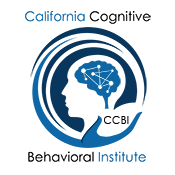KEY POINTS
- Our state of mind is changeable, but not out of our control.
- A broad state of mind leads toward creativity, a positive mood, and openness to new experiences.
- Someone with a narrow state of mind reverts to memory, experience, and limited expectations.
- You can learn to optimize your state of mind to adjust to situations and challenges at hand.
State of mind is changeable and elastic, responsive to our environment. Think of it like our eyes: In bright light, our pupils constrict. In dim light, they widen.
Often, things beyond our control influence our state of mind. However, that doesn’t leave us helpless. We can have agency when it comes to our state of mind and maneuver it to be primed for a task or challenge before us.
How Our State of Mind Affects Us
Say you are an executive gathering your team for a brainstorming session for an original solution to a problem that is hurting your business. Should you care about their states of mind as they sign onto a video call or gather around a conference table?
You certainly should. How we feel affects how we think.
People in good moods tend to be more creative and better at solving problems that require novel solutions. They can more easily access their memories to summon more unusual information than people who are in a negative mood.
Here’s an example: Ask people to name a means of transportation. The typical response will be “car.” A person in a positive mood, however, is more likely to respond with “elevator,” “moped,” or “camel.”
So, if creative thinking is your aim, start a brainstorming session with a clip from an amusing movie (Monty Python always makes me laugh) or social media video (perhaps for a younger group). It will lift the participants’ moods with laughter and encourage broader thinking.
Looking for a solution to a narrow financial issue? Show a selection from a mystery or psychological drama like “Sophie’s Choice.”
A Brief Review of “State of Mind” Science
There are several pillars of our mental life, among them:
- Attentionis the flashlight we use to examine our environment. We can focus on narrow, concrete details (the trees), or more abstract “big picture” (the forest).
- Perceptionstems from information gathered by our senses: sight, taste, touch, smell, and hearing. This is “bottom-up” perception. Perception can also be “top down,” driven more by our memories and expectations.
- Openness to experiencecan shift between being unguarded about exploration and taking risks and, alternatively, playing it safe and using only what is familiar.
Here comes the intriguing bit.
Two decades of research led me to start noticing that these pillars of our mental life—attention, perception, thought, openness, and mood—are linked. They shift and change together. It’s as if someone cast a net over our entire cortex.
In other words, state of mind is a package deal.
- In a broad (or open) state of mind, someone is associative in their thinking. One idea triggers another, and another, and another. They are also in a positive mood, attending to and perceiving the world around them in a more global, bottom-up, and exploratory manner. They have a heightened sensitivity to what’s new or unusual.
- In a narrow (or closed) state of mind, someone accesses a limited range of information, leaning on what is familiar and routine. They avoid novelty and uncertainty. Perception is more top-down.
Luckily, most of the time, we slide side-to-side along the broad-narrow continuum. Nevertheless, it’s wise to understand that different states of mind breed varying perspectives, and how this can matter.
Take the example of a situation that makes you feel uncertain. If you are in a narrow state of mind, uncertainty can trigger anxiety. In a broad state of mind, the same uncertainty can be thrilling.
Tips for Optimizing Your State of Mind
The optimal state of mind is the one that fits the situation. Sometimes, it is better to be broad in our thinking; in particular situations, narrow thinking is needed. Being aware of the benefits of switching from open to closed states of mind—and points in between—we can begin to be purposeful in matching our state to the situation.
In many respects, changing a state of mind is akin to the psychological concept of reframing. Basically, we can look at the same situation in different ways, and how we choose (or adapt) to look at it can affect our entire attitude towards it.
Sometimes, of course, forces beyond our control can trigger a state of mind, such as witnessing an accident or receiving good news. Internal signals, such as bodily sensations or our thoughts, can also push us along the spectrum.
Nevertheless, there are ways we can use to calibrate our mental state and move it along the narrow-to-broad spectrum. They include:
- Practice becoming aware of your state of mind. Mindfulness meditationcan be a great way of monitoring one’s own mental state.
- Seek out new places to explore (remember my India anecdote above?), try a new dish, or try something that might make you uncomfortable.
- Do things to lift your mood. Sometimes just ice cream or a funny movie will do the trick.
- Consider if and how time of day factors into your state of mind. Few like to veer from their morning coffee routine but most of us are open for a surprise dish by lunchtime.
- Harness your mental state for better performance. Happinesstends to be a great state of mind for coming up with unconventional solutions to problems, for example. It can also invite risk-taking. So, have a critical decision to make? Perhaps slide your state of mind toward the narrow end of the spectrum.
When I am in a broad and open state of mind, I seek out an exploratory activity to take advantage of it or let my mind wander in hopes of coming up with some good new ideas to explore in my work.
Over time, state-of-mind checks become second nature.
References
- Herz, N., Baror, S., & Bar, M. (2020). Overarching states of mind. Trends in Cognitive Sciences, 24(3), 184–199. https://doi.org/10.1016/j.tics.2019.12.015

